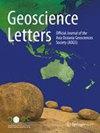沿海沟轴的活动沉积物输运:琉球海沟西南部海洋沉积物的x射线荧光核扫描和磁分析的见解
IF 4.3
3区 地球科学
Q1 GEOSCIENCES, MULTIDISCIPLINARY
引用次数: 0
摘要
摘要:琉球海沟西南部是研究台湾山带向琉球海沟底输沙的理想场所。利用位于琉球海沟西南端的KR1518-PC04/PL04和位于海沟底部的YK1501-PC14/PL14两个活塞岩心,研究海沟浊积岩特征及海沟输沙特征。在未受扰动的海床表面采集了YK1611-6K1467MG和6K1467MR两个推岩芯,进行岩性观测。我们的分析表明,岩心的岩性显示出均匀的灰色泥层与极薄的细砂层相嵌,我们将其解释为与极薄浊积相嵌的半浮游岩。从YK1501-PC14和KR1518-PC04中分别鉴定出60个浊积岩(0.3-4.0 cm厚)和36个浊积岩(0.9-4.2 cm厚)。根据YK1501-PC14的观测,浊积岩的厚度大多小于1 cm,呈现平面和尖锐的底部接触。YK1501-PC14 (6448 m水深)的浊积层厚度总体上比KR1518-PC04 (6147 m水深)的浊积层厚度薄。通过x射线荧光核心扫描(ITRAX),我们根据元素模式区分了海沟浊积岩,并准确确定了每一个极薄浊积岩的深度。YK1501-PC14和KR1518-PC04的半黑石具有相似的ITRAX剖面,表明沉积物来源相似。ITRAX分析还发现了YK1501-PC14的5个高钙泥层,表明了另一个可能的来源来自琉球前弧。各向异性磁化率(AMS)结果表明,YK1501-PC14/PL14和KR1518-PC04/PL04均呈扁圆形,表明沉积条件正常。磁信号显示磁黄铁矿的存在,支持了台湾沉积物可以被浊流输送到约250公里,并从台湾岛扩散到琉球海沟底部的证据。这项研究提高了我们对琉球海沟浊积岩的认识,并为琉球海沟西南部的活动沉积物运输提供了有价值的见解。本文章由计算机程序翻译,如有差异,请以英文原文为准。
Active sediment transport along trench axis: insights from X-ray fluorescence core scanning and magnetic analysis of marine sediments in the southwestern Ryukyu Trench
Abstract The southwestern Ryukyu Trench is an ideal place for investigating sediment transport from the Taiwan mountain belt to the Ryukyu Trench floor. To study the characteristics of trench turbidites and sediment transport along the trench, we utilize two piston cores: KR1518-PC04/PL04 at the southwestern end of Ryukyu Trench and YK1501-PC14/PL14 in the trench floor. We also collect two push cores, YK1611-6K1467MG and 6K1467MR, from undisturbed seabed surface to observe lithology. Our analysis reveals that the lithology of the cores shows homogeneous gray mud layers intercalated with very-thin fine sand layers, which we interpret as hemipelagites intercalated with very-thin turbidites. We identify 60 turbidites (0.3–4.0 cm thick) from YK1501-PC14 and 36 turbidites (0.9–4.2 cm thick) from KR1518-PC04. Based on observation from YK1501-PC14, most turbidites, which were less than 1 cm in thickness, displayed planar and sharp bottom contacts. The turbidite thickness of YK1501-PC14 (6448 m water depth) is thinner than that of KR1518-PC04 (6147 m water depth) in general. Through X-ray fluorescence core scans (ITRAX), we distinguished trench turbidites by elemental patterns and accurately determined the depths of every very-thin turbidite. Most hemipelagites from YK1501-PC14 and KR1518-PC04 show similar ITRAX profiles, indicating a similar source of the sediments. ITRAX analysis also revealed five intervals in high-Ca mud in YK1501-PC14, suggesting another potential source from the Ryukyu forearc. Anisotropy of Magnetic Susceptibility (AMS) results show that both YK1501-PC14/PL14 and KR1518-PC04/PL04 exhibit an oblate fabric indicating a normal sedimentary condition. Magnetic signatures showed the presence of pyrrhotite, supporting evidence that Taiwan-sourced sediments can be transported up to ~ 250 km by turbidity currents and spread from the Taiwan Island to the Ryukyu Trench floor. This study improves our understanding of Ryukyu Trench turbidites and provides valuable insights into active sediment transport along the southwestern Ryukyu Trench.
求助全文
通过发布文献求助,成功后即可免费获取论文全文。
去求助
来源期刊

Geoscience Letters
Earth and Planetary Sciences-General Earth and Planetary Sciences
CiteScore
4.90
自引率
2.50%
发文量
42
审稿时长
25 weeks
期刊介绍:
Geoscience Letters is the official journal of the Asia Oceania Geosciences Society, and a fully open access journal published under the SpringerOpen brand. The journal publishes original, innovative and timely research letter articles and concise reviews on studies of the Earth and its environment, the planetary and space sciences. Contributions reflect the eight scientific sections of the AOGS: Atmospheric Sciences, Biogeosciences, Hydrological Sciences, Interdisciplinary Geosciences, Ocean Sciences, Planetary Sciences, Solar and Terrestrial Sciences, and Solid Earth Sciences. Geoscience Letters focuses on cutting-edge fundamental and applied research in the broad field of the geosciences, including the applications of geoscience research to societal problems. This journal is Open Access, providing rapid electronic publication of high-quality, peer-reviewed scientific contributions.
 求助内容:
求助内容: 应助结果提醒方式:
应助结果提醒方式:


